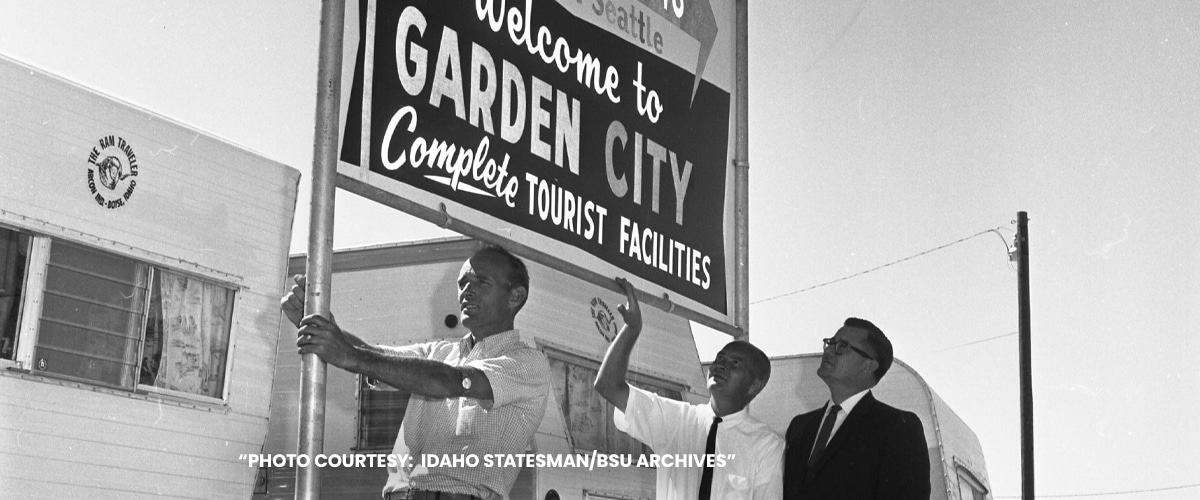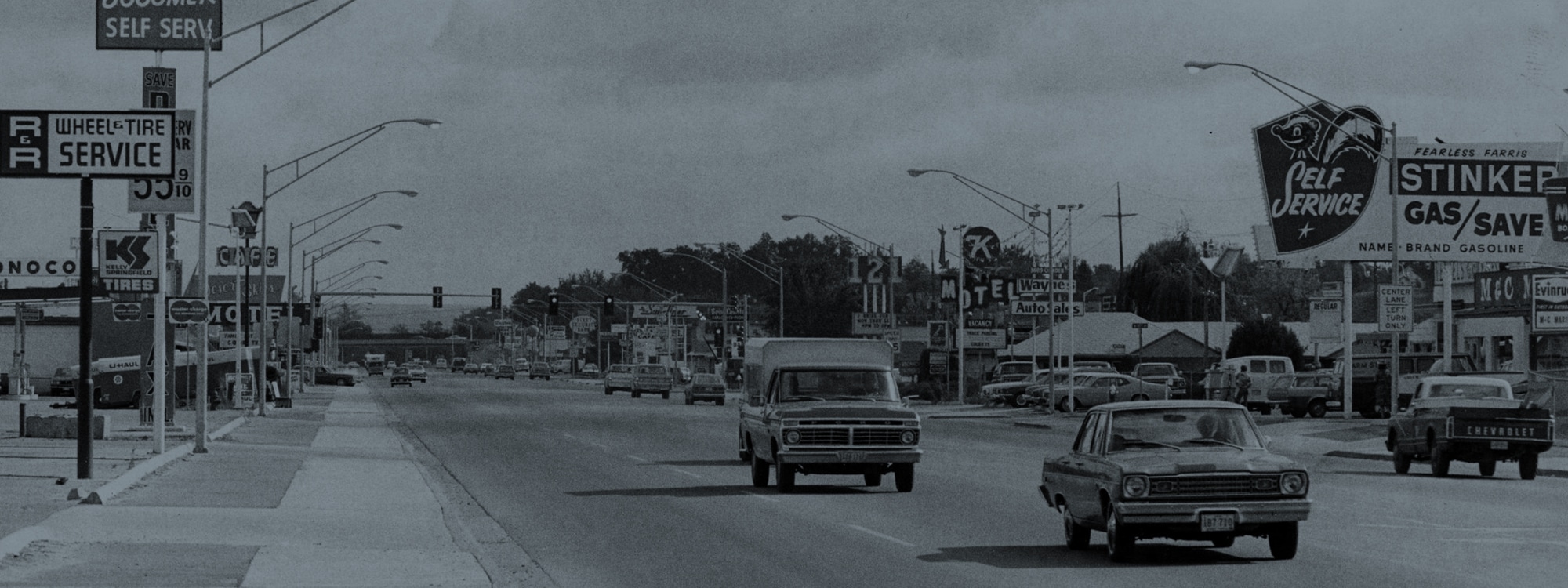our
blog
History of Garden City

A Brief History of Garden City
Why is Garden City called Garden City? What’s with all of the Atomic Era business signs on Chinden Boulevard? And what the heck is a “chinden,” anyway?
To find the answers, we have to go back in time.
Oregon Trail Roots
Originally, the land that is now Garden City was part of the greater Boise area. When Major Pinckney Lugenbeel established a military post in Boise to provide protection for Oregon Trail immigrants and local settlers back in 1863, he commandeered land along the Boise River to grow hay for horses. (It was given the rather uninspiring name “Government Island.”)

Putting the Garden in Garden City
By 1884, the government had pulled much of its presence out of the valley, and the land went up for sale. By 1890, cattle rancher Thomas J. Davis had bought over 600 acres and began leasing it to Chinese immigrants.
In the latter half of the 19th century, Chinese immigrants were a huge part of the population in what would become the Treasure Valley. Many of these hard-working laborers arrived here in search of gold, but growing and selling produce was less back-breaking. They raised hogs and row crops like strawberries and onions. Their neat gardens gave Garden City its name — in fact, Chinden Boulevard is a portmanteau of “Chinese” and “gardens.”
A Village Is Born
By 1949, most of the gardens in Garden City, along with the Chinese immigrants, were gone. But there was a large enough population in the area for Ada County to grant village status to the land now known as Garden City.
The timing wasn’t a coincidence. Boise, the village’s next-door neighbor, had just banned gambling. The business owners of the new Garden City sensed an opportunity to build “amusement centers” — otherwise known as gambling houses — to fund the village and make a small fortune. The new village fathers promoted Garden City as a place where industry, home builders, and small businesses of many stripes were welcome. But it wasn’t a lawless community: a 1950 pamphlet boasts the “law-abiding community has the best of police protection.”
Gambling Is Good for Growth
Garden City boomed for a few years as gamblers flocked to the slot machines at establishments like the Hi Ho Club and the Circle M. And, of course, the village took a share of the profits. Gambling revenues paid for a new water system, a city hall, a park and playground, and much more.
But the party was over by the mid-’50s. The Legislature stepped in and banned gambling, including slot machines and more benign vices like lotteries, in an effort to improve morality.

Building Big Business
Garden City leaders folded on gambling but decided to double down on businesses. They began attracting the village as a great — and cheap — place to set up shop. Just about anyone was welcome in Garden City: nightclubs, over 18 shops. It was a cheap place to build a home, too, without many of the housing regulations required by other cities. In the 1970s, Garden City was a mashup of industry and free-for-all housing.
Making Garden City Bloom Again
By the 1980s, the village — now an officially incorporated city — was in the throes of an identity crisis. City leaders worked hard to tighten regulations and make living and working in Garden City safer and cleaner while strengthening business ties.
An unexpected benefit of years of tumult, however, was that Garden City’s affordability attracted a community of artists looking for cheaper housing and studio space. By 1998, when artist Surel Mitchell built a home in Garden City, the town was primed to experience a renaissance. Thanks to her ceaseless efforts, Garden City began attracting a reputation as a haven for creative thinkers and doers.
Today, the city continues to evolve. Travel down Chinden Boulevard today and you’ll catch glimpses of 1950s nightclubs and 1960s office parks, but you’ll also see thriving businesses. The gardens that lined the river have been replaced with the Greenbelt and a series of parks. Garden City is reinventing itself yet again — this time, for the better.
